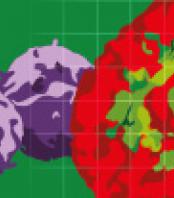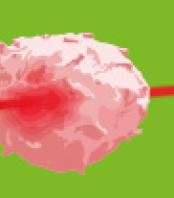Attana biosensors provides a reliable, fast and versatile label-free method to study molecular interactions.

Automated microscopy and Spatial Proteomics
Real-time, label free cell analysis
Nano and micro particle analysis

Accelerate to discover
Related topics
Theranostics: From Mice to Men and Back

Jun 25, 2024
Recorded webinar
Presenters: Prof. Dr. Ken Herrmann and Prof. Dr. Katharina Lückerath – Moderator: Hannah Notebaert
X-RAD 320 for irradiation therapy during quantifying study for in vivo collagen reorganization

Jun 5, 2024
Quantifying in vivo collagen reorganization during immunotherapy in murine melanoma with second harmonic generation...
Use of MRI and microCT to evaluate gene therapy for the treatment of discogenic back pain

Jun 4, 2024
MRI images were obtained using the 9.4T Bruker BioSpec system, equipped with 40 mm 1H quadrature volume resonator, and...
High-frequency Ultrasound System For Preclinical Imaging

May 13, 2024
The Prospect T1 is an innovative high-frequency ultrasound system designed specifically for in vivo preclinical imaging...
“Range+T “ for Tight Sizing of HMW Libraries

May 10, 2024
We decided to do a deep dive into Range+T to get a better handle the method, and to develop best practices for using...
April 2024 publication revealing benefits of using intravital microscopy in trascriptomics studies

May 8, 2024
Transcriptional activation of Bmal1 drives the inflammatory activity of monocytes by modulating mitochondrial unfolded...
Minimal information for studies of extracellular vesicles (MISEV2023)

May 7, 2024
MISEV2023 is intended to aid any and all EV researchers: from those just starting their EV journey to more established...
Omics Studies of Tumor Cells under Microgravity Conditions

May 6, 2024
It is important for the analysis of data from space experiments to distinguish unspecific stress reactions from...

Jun 14, 2016
The team of Professor Dr. Roland Kontermann at the Institute of Cell Biology and Immunology, University of Stuttgart, Germany has recently published an article in PLOS ONE titled A Fab-Selective Immunoglobulin-Binding Domain from Streptococcal Protein G with Improved Half-Life Extension Properties.
Professor Kontermann's group is working on the development of novel strategies for tumor therapy. The strategies are based on the use of specific ligands to target potent cytotoxic effector mechanism to the tumor. Their focus is on three effector arms: 1) bispecific antibodies for the retargeting of effector cells of the immune system (immunotherapy), 2) targeted carrier systems (liposomes, polymers) for drug delivery (chemotherapy), and 3) targeted cytotoxic fusion proteins (biotherapy). Main targets are molecules associated with the tumor vasculature (vascular targeting), since these structures are easily accessible for circulating agents and all solid tumors are dependent on vascularisation.
In this publication the group employed their Attana A200 system for affinity determination.
Brand profile
Attana biosensors provides a reliable, fast and versatile label-free method to study molecular interactions.
More info at:
www.attana.com/